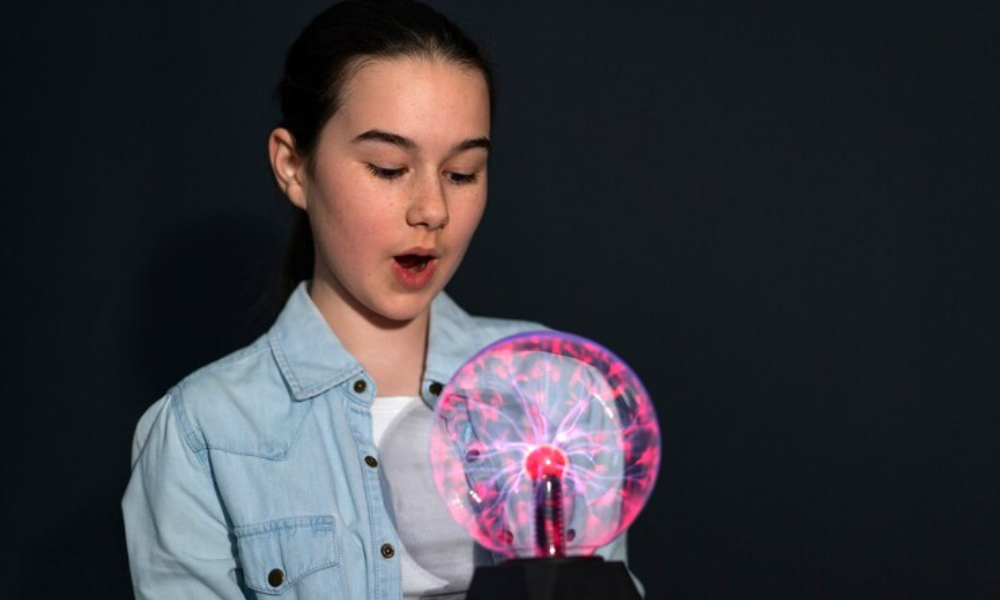Curiosity is a key driver of learning and growth in children. When a child is curious, they become more engaged, motivated, and excited to explore their surroundings. By nurturing and supporting your child curiosity, you can open up a world of opportunities for their cognitive, social, and emotional development.
In this guide, we’ll look at various ways to boost your child curiosity and give you the tools and insights needed to help your child develop a lifelong love of learning.
The Importance of Curiosity in Child Development

Curiosity plays a vital role in child development because it helps a child learn, solve problems, and understand the world. When children are curious, they ask questions, look for new information, and enjoy exploring things hands-on. This eagerness not only supports their academic performance but also enhances their critical thinking, creativity, and ability to learn on their own.
Research shows that children who are more curious tend to do better in school, especially in reading and math. Curiosity is also linked to developing social and emotional skills like empathy, problem-solving, and self-regulation. By encouraging and nurturing child curiosity , you can help your child become more engaged and successful both in school and in life.
Strategies for Boosting Your Child Curiosity

1. Foster a Sense of Wonder
One of the most powerful ways to boost a child curiosity is to cultivate a sense of wonder and awe in their everyday experiences. Encourage your child to observe the natural world, explore new environments, and ask questions about the things they encounter.
For example, you could take your child on a nature walk and encourage them to examine the different leaves, flowers, or insects they find. Ask open-ended questions, such as “I wonder why this leaf is shaped like that?” or “What do you think this bug is doing?”
2. Encourage Exploration and Hands-On Learning
Children are natural explorers, and providing them with opportunities to engage in hands-on learning can be a powerful way to nurture their curiosity. Set up a designated “exploration area” in your home, where your child can freely experiment with various materials, such as art supplies, building blocks, or science kits.
Encourage your child to take the lead in their exploration, offering guidance and support only when necessary. Ask open-ended questions that encourage your child to think critically and problem-solve, such as “What do you think will happen if you mix these colors together?”
3. Expose Your Child to New Experiences
Exposing your child to new and diverse experiences can pique their child curiosity and broadens their horizons. This can include taking them to museums, art galleries, or cultural events, as well as introducing them to new hobbies, sports, or cuisines.
When introducing new experiences, be sure to engage your child in the process. Ask them what they notice, what they’re curious about, and what they’d like to learn more about. This will help them feel more invested in the experience and more likely to continue exploring.
4. Model Curiosity and Lifelong Learning
Children are highly observant and often model the behaviors and attitudes of the adults in their lives. By demonstrating your own curiosity and love of learning, you can inspire your child to develop a similar mindset.
Share your own questions and interests with your child, and invite them to explore and investigate alongside you. Engage in activities that foster your own sense of wonder, such as reading non-fiction books, watching educational documentaries, or engaging in hands-on science experiments.
5. Encourage Questioning and Provide Thoughtful Responses
Asking questions is a fundamental aspect of curiosity, and it’s important to create an environment where your child feels comfortable expressing their curiosity. Encourage your child to ask questions, and be patient and responsive when they do.
When your child asks a question, avoid the temptation to simply provide the answer. Instead, try to engage them in a conversation that helps them explore the question further. Ask them what they think the answer might be, or encourage them to come up with their own hypotheses. This will not only nurture their child curiosity but also support the development of critical thinking skills.
6. Embrace Mistakes and Failures
Curiosity often involves a willingness to take risks and try new things, which can sometimes lead to mistakes or failures. It’s important to create an environment where your child feels safe to experiment and learn from their experiences, without fear of judgment or criticism.
When your child experiences a setback or makes a mistake, reframe it as an opportunity for learning and growth. Encourage them to reflect on what they’ve learned and how they might approach the situation differently next time. This will help your child develop a growth mindset, where they see challenges as opportunities rather than obstacles.
7. Collaborate with Your Child’s Educators
Partnering with your child’s educators can be a powerful way to support and nurture their curiosity. Share your observations and insights about your child’s interests and learning style with their teachers, and work together to create learning experiences that align with your child curiosity.
Additionally, encourage your child’s teachers to incorporate hands-on, inquiry-based learning opportunities into their curriculum. This can help foster a sense of wonder and excitement about learning, both at home and in the classroom.
Creating a Curiosity-Friendly Home Environment

1. Design an Inspiring Learning Space
Create a space at home that encourages exploration and creativity. Equip it with materials like books, puzzles, and art supplies. Make sure it’s a place where your child feels free to experiment and explore new ideas.
2. Encourage Daily Learning Moments
Look for everyday opportunities to spark child curiosity. Cooking together can lead to questions about ingredients and measurements, while a visit to the park might prompt discussions about nature and wildlife. Use these moments to engage with your child’s interests and expand their knowledge.
3. Celebrate Curiosity and Achievements
Acknowledge and celebrate your child’s curious nature and the discoveries they make. Praise their efforts and enthusiasm, not just the outcomes. This positive reinforcement will encourage them to keep exploring and asking questions.
The Role of Technology in Enhancing Curiosity

1. Use Educational Apps and Websites
Incorporate educational technology that aligns with your child’s interests. There are many apps and websites designed to make learning fun and interactive. Choose ones that encourage exploration and provide opportunities for hands-on activities.
2. Balance Screen Time with Real-World Exploration
While technology can be a great tool for learning, balance it with real-world experiences. Ensure that screen time is just one part of a diverse range of activities that include outdoor play, creative projects, and family interactions.
Conclusion
Boosting your child curiosity is essential for their development and overall well-being. By using the strategies outlined in this guide, you can create an environment that nurtures your child’s natural inquisitiveness and love of learning. Remember, fostering curiosity is an ongoing process. Be patient and flexible as you support your child’s unique learning journey. With time, dedication, and a willingness to explore alongside your child, you can help them reach their full potential and become lifelong learners.









